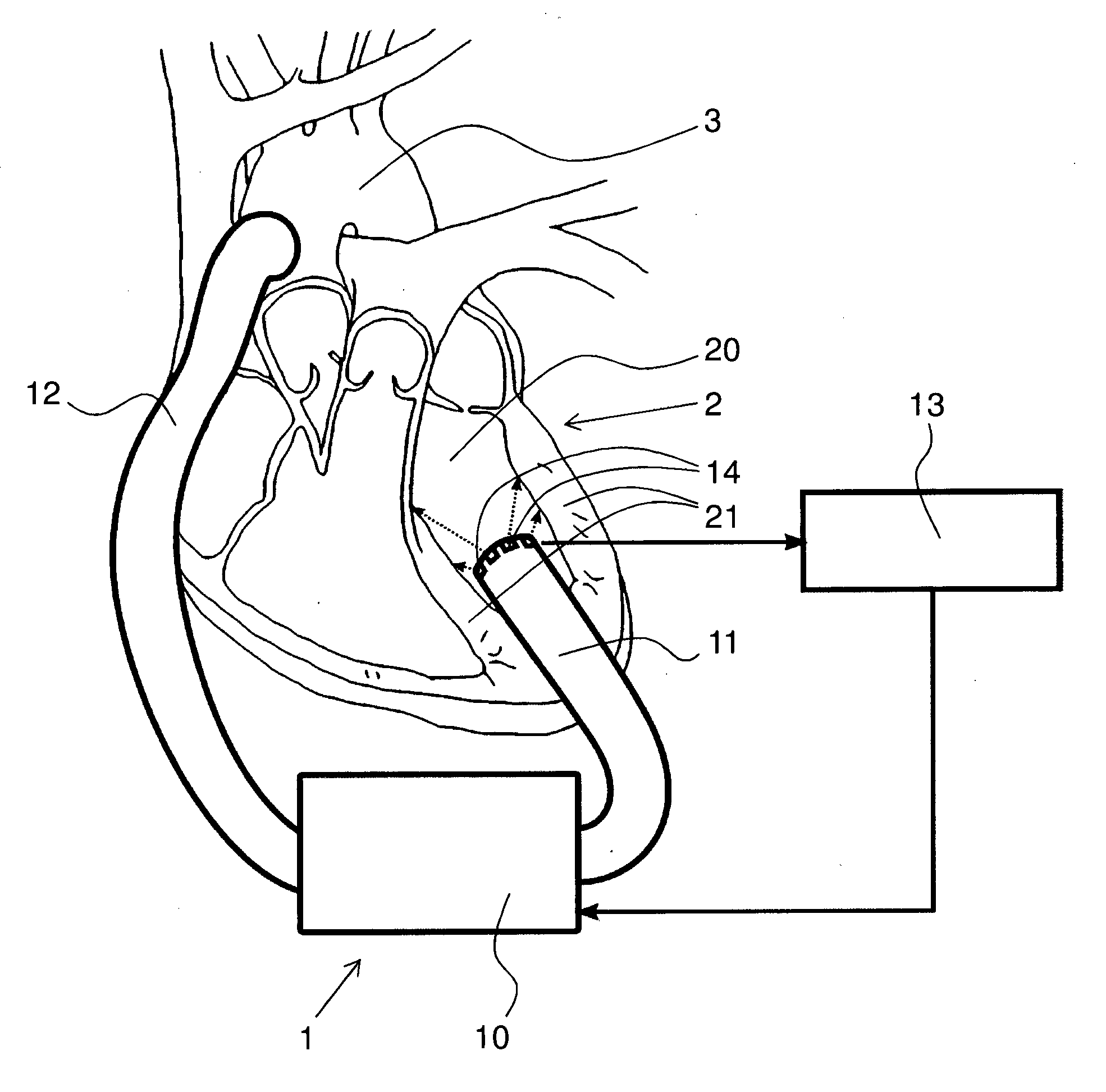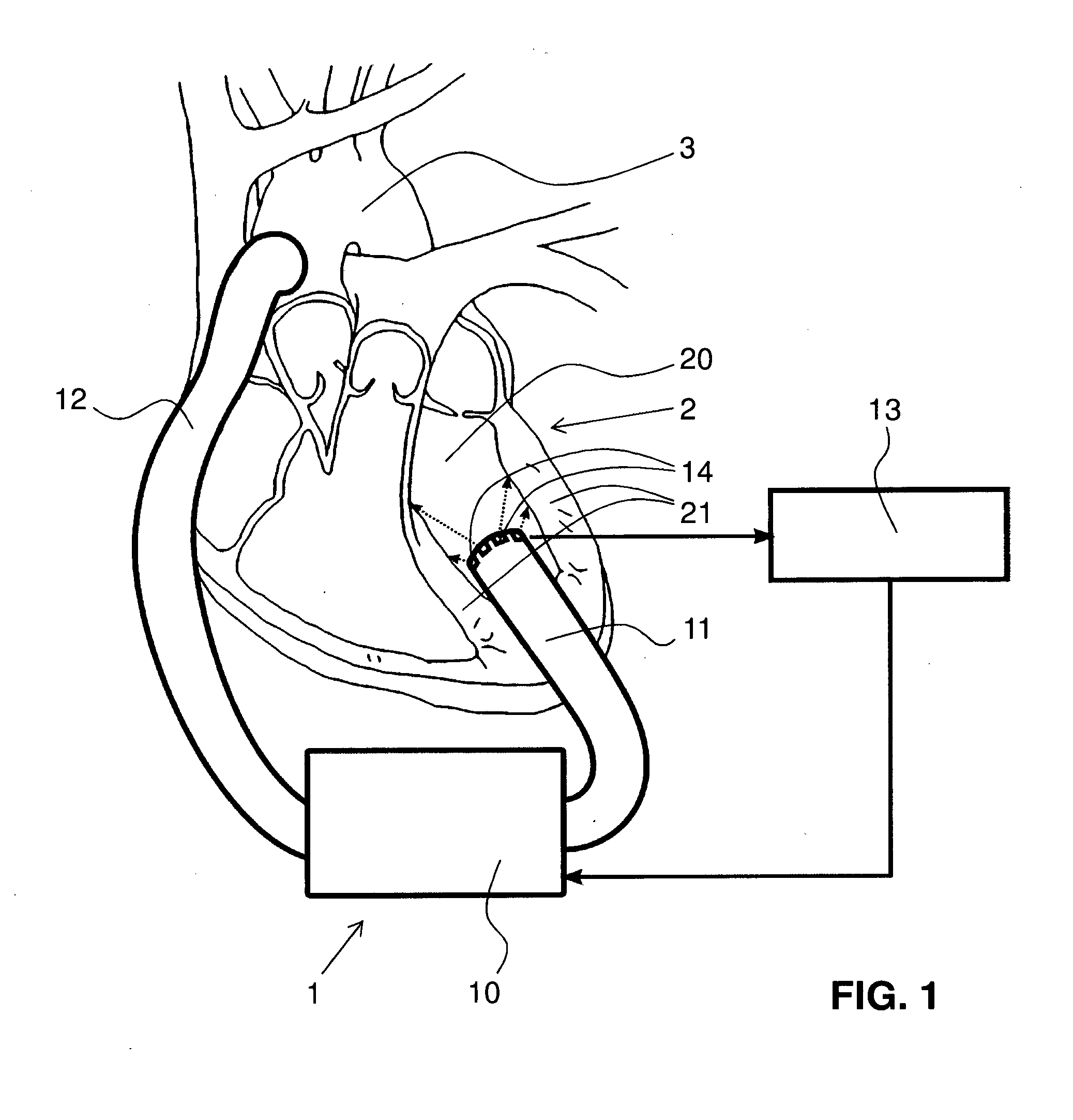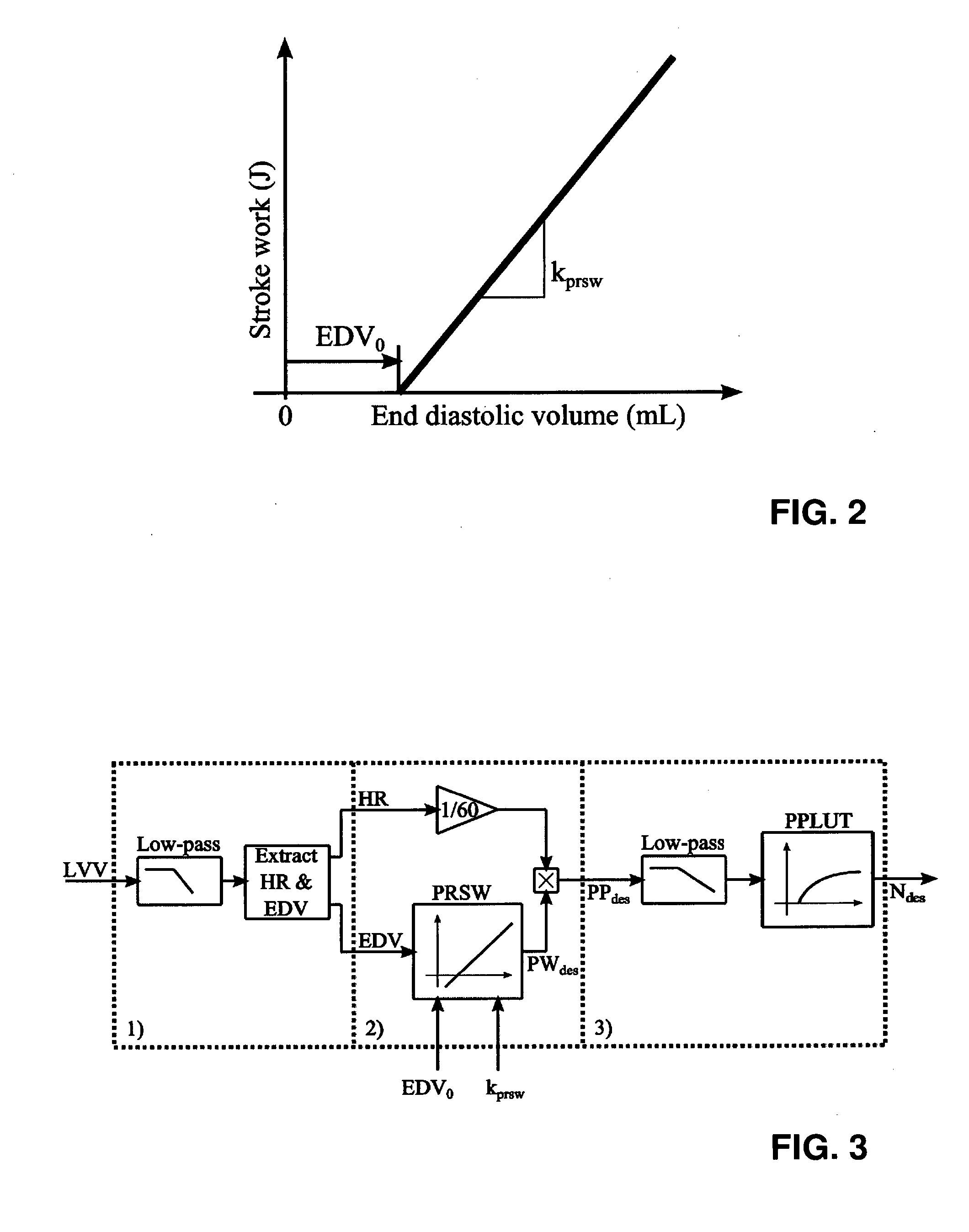Biomedical Apparatus for Pumping Blood of a Human or an Animal Patient through a Secondary Intra- or Extracorporeal Blood Circuit
a biomedical device and blood circuit technology, applied in the field of biomedical equipment for pumping blood of a human or an animal patient through a secondary intra- or extra-corporeal blood circuit, can solve the problems of affecting the patient's cardiac function, affecting the patient's overall health, so as to achieve the effect of minimal risk for the patien
- Summary
- Abstract
- Description
- Claims
- Application Information
AI Technical Summary
Benefits of technology
Problems solved by technology
Method used
Image
Examples
Embodiment Construction
[0042]In FIG. 1, an inventive embodiment of a biomedical apparatus for pumping blood of a human or an animal patient through a secondary intra- or extracorporeal blood circuit is shown. The apparatus of this embodiment is a Ventricular Assist Device (VAD) 1 used to partially or completely replace the function of a heart 2 of a patient with heart failure.
[0043]The VAD 1 comprises a blood pump 10, which can be a pneumatically or electrically actuated pulsatile volumetric pump, or an axial or centrifugal turbodynamic pump with classical contact bearings, with a magnetically levitated rotor or with a blood-immersed bearing. A large variety of pumps of these kinds and suited for being used in a VAD are known to the person skilled in the art.
[0044]Connected to the blood pump 10 is an inlet duct or, here, an inlet cannula 11, which has a free end being inserted into the left ventricle 20 in the region of the apex of the heart 2. The inlet cannula 11 serves to guide blood from the inside of...
PUM
 Login to View More
Login to View More Abstract
Description
Claims
Application Information
 Login to View More
Login to View More - R&D
- Intellectual Property
- Life Sciences
- Materials
- Tech Scout
- Unparalleled Data Quality
- Higher Quality Content
- 60% Fewer Hallucinations
Browse by: Latest US Patents, China's latest patents, Technical Efficacy Thesaurus, Application Domain, Technology Topic, Popular Technical Reports.
© 2025 PatSnap. All rights reserved.Legal|Privacy policy|Modern Slavery Act Transparency Statement|Sitemap|About US| Contact US: help@patsnap.com



